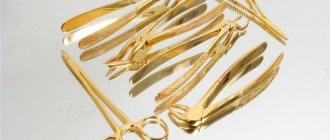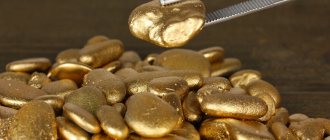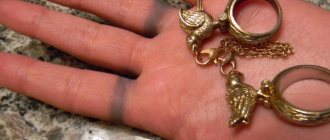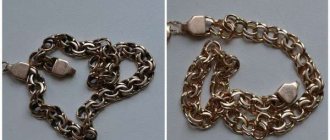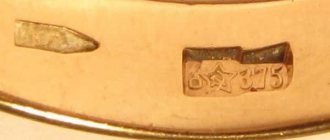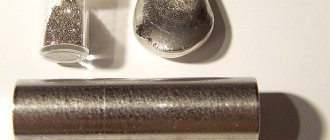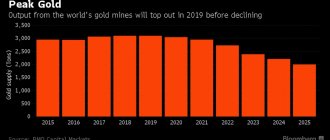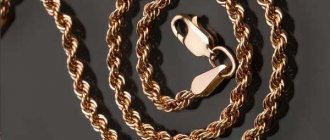How gold is formed in nature
In our world, gold microparticles are present in everything: animal and plant tissues, minerals, water. But until recently, it was not possible to understand how gold was formed and why it is so unevenly distributed throughout the Earth.
Origin theories
The scientific community officially recognizes two theories:
- cosmogonic;
- theory of conservation of matter.
According to the first version, particles of the yellow metal were brought to Earth by meteorites that bombarded our planet billions of years ago. Another theory states that gold is part of the Earth and was originally contained in its core.
Recent discoveries also support the second version. With the development of engineering, when scientists looked into the most mysterious depths of the sea, studied the composition of the ocean floor near tectonic faults, they managed to get an answer to the most exciting question, where does gold come from.
Here, at the very heart of our planet, the process of formation of elements containing gold was discovered. Under conditions of high pressure, high temperatures and an aggressive acidic environment, one of the most sought-after metals appears.
Solutions saturated with gold rise through cracks in the crust, but closer to the seabed the pressure drops, cold water causes a convection effect, and a chemical reaction begins, resulting in the precipitation of free gold particles or sulfide compounds. By the way, salt water contains quite a lot of dissolved gold, which means that the scientific community has yet to find a way to extract it.
Properties of gold
Only in films can you see how an exhausted gold miner pulls out a huge piece of gold shining in the sunlight. In reality, it is difficult to detect and recognize this metal in the ground, because it looks completely different. Nuggets, depending on impurities, may not have the usual shine and are characterized by a greenish tint.
You can understand that you have pieces of precious metal in front of you using chemical reagents and physical experiments. Gold differs in several ways:
- low electrical resistance;
- high thermal conductivity;
- easy to forge and polish;
- has high reflectivity.
But the main quality lies in the inertness of the noble metal. Gold does not react chemically with other elements except fluorine, cyanide and oxygen, but this requires high temperatures and certain conditions. It dissolves only in a mixture of nitric and hydrochloric acids, called aqua regia.
When did gold become valuable?
Archaeological excavations have shown that people used the precious metal as early as the 5th century BC. But early human settlements used raw gold.
People began to create gold household items and jewelry much later.
The earliest gold jewelry, dating back to the Bronze Age, was found in Ireland. True, metal was not very popular among these people. It was exchanged at the market for goods more valuable to the northerners.
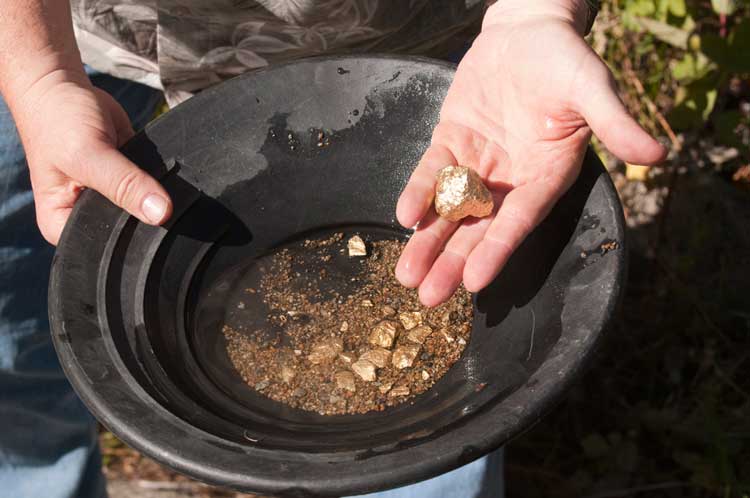
Active ore mining in the Ancient world was carried out in the Mediterranean countries. Residents of the Middle East supplied ore and products made from it to Egypt. The most ancient jewelry made of precious metal was discovered in the tombs of the Egyptian queen and ruler of the Sumerians. Both specimens date back to the 3rd millennium BC.
In Russia, the first gold mine was discovered only in 1732 by prospectors from the Arkhangelsk province. But they began to develop it much later. The official start date of work is considered to be 1745. In total, the first Ural deposit yielded 65 kg.
Goldmine
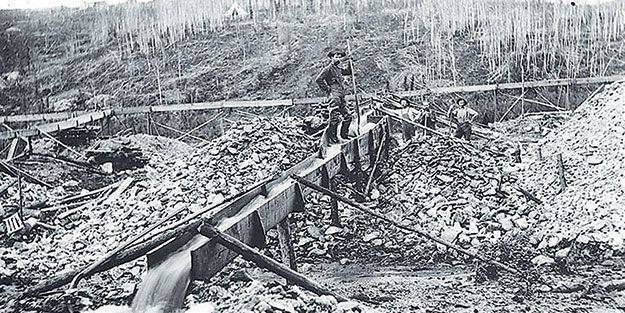
Industrial gold mining in Russia began exactly 270 years ago: with three or four shiny stones dug up near Yekaterinburg on May 21 (June 1), 1745 between Shartashskaya and Stanovaya villages by the Old Believer Erofei Markov. Gold was not his goal - he was looking for “tumpas” and “stroganets” (smoky and transparent rock crystal) for a cutting factory. But over time, through the efforts of the Ural miners, the semi-handicraft gold mining industry turned into a powerful industry.
Berezovsky unique
Mentions that there are large deposits of precious metals on the territory of modern Russia were found back in the 5th century. But only ten centuries later, under Tsar Ivan III, their search became a state task: many favors were promised to those who found gold and reported it to the authorities, and terrible punishments to those who found and hid it. The efforts, however, were in vain: no one provided official data about the gold found. Later, Peter I developed active efforts to discover domestic gold, but equally unsuccessfully.
Only 20 years after the death of the first Russian emperor, the accidental discovery of Erofei Markov radically changed the situation. Where, among the swamps, he first dug up “a pebble with particles like gold,” a mine was founded in 1747, which gave rise to the rich Primary mine. Geologists note that this is an amazing, unprecedented fact in the world history of searching for and finding gold, since in all gold-mining countries alluvial deposits were first discovered, and only then primary (vein) deposits. In Russia it’s the other way around.
The mine became the founder of the Russian gold mining industry as an independent industry. Ten years later, by order of the mining chief Nikifor Kleopin, the first specialized gold washing plant in the Russian Empire was built and launched here.
Later it turned out that this was a unique world-class vein gold deposit, included in geological textbooks in all countries of the world. It turned out to be incredibly rich and long-lived: in more than 250 years (work was interrupted only during the period of devastation from 1923 to 1929), over a thousand mines were built here. Four are still in operation, with one of the mines recognized as the oldest operating mine in the world.
The Old Believer’s luck inspired many to search for gold: in the 18th century, primary gold deposits were found in the Urals at the Shilovo-Iset copper mine, in the area of the Nevyansk plant, Nizhny Tagil, and Miass.
Brusnitsyn fever
But the real gold rush was sparked by the discovery of placer gold made by foreman Lev Brusnitsyn near the same Berezovsky mine in September 1814. And if the previous find was simple luck, then this one was the result of many years of work and incredible ingenuity. Lev Brusnitsyn is not an accidental person in the mining industry: from the age of 11 he worked as a panner in gold mines, and by the age of 30 he became the technical director of a large gold washing factory at that time. He was sent to develop new industries throughout the Urals and Siberia.
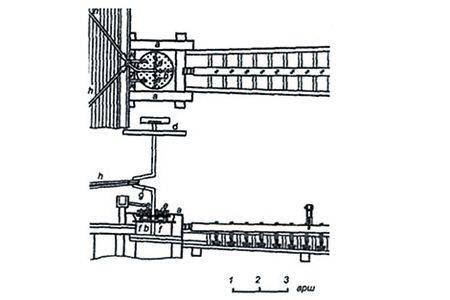
Diagram of Lev Brusnitsyn’s gold washing machine - the prototype of devices still produced for the industrial mining of placer gold). It is based on a manual device with swivels: the sandy material was wiped on a grated platform, separated from the clay, it fell into the airlock, washed in a weak stream of water and moved to the settling tanks-catchers. In 12 hours, one worker could process up to 400 kg of raw materials Illustration: Berezovsky central city library
A good knowledge of the peculiarities of the occurrence of indigenous gold helped him discover placer gold. He searched purposefully. While examining the old folding dumps of the Petropavlovsk ore crushing factory, I noticed two grains of gold, different in color and shape from those mined from bedrock ores. A long search for the place where they got into the tray led to rich gold-bearing sands in the basin of the Pyshma and Berezovka rivers.
The merit of Lev Brusnitsyn is not only that he was able to discover the first placer gold in Russia. He was the first to use a new method of extracting precious metal - washing, he himself designed washing machines, and managed to organize industrial mining. Moreover, all his inventions were economical and easy to use.
The discovery of a new type of gold deposits - easily enriched, accessible to even one person for mining in the most primitive ways - marked the beginning of the world's first gold rush. It was from here that this “epidemic” spread throughout the planet. Numerous placers of the precious metal were found in other areas of the Urals, in Siberia and Altai, which served as a new powerful impetus for the development of the gold industry in the country, which so needed money after the ruinous war with Napoleon. From 1812 to 1845, the volume of gold production in Russia increased 20 times, which brought it to first place in the world. The country provided half of the world's production of the precious metal. Gold of the North
The discoveries and inventions of Lev Brusnitsyn determined the approach to gold mining in the Urals for centuries to come - mainly alluvial deposits were mined here. Moreover, there were a lot of them.
A new stage of gold mining in the region is associated with the discovery in 1985 in the north of the Sverdlovsk region near Krasnoturinsk of a new large gold deposit - Vorontsovsky (gold reserves - 65 tons, silver - 58 tons). Geologists knew that sooner or later they would find it, because the placer deposits with which the region was saturated were derived from the indigenous ones. Deposits were discovered by starting additional exploration of the Severopeschanskaya iron ore mine.
To develop Vorontsovka, in 1993, a group of local entrepreneurs, with the participation of the Krasnoturinsk administration, created the “Gold of the Northern Urals” enterprise. The shareholders tried to find ways to develop this deposit, but they lacked enterprise and courage - the deposit resembled a layered pie: oxidized ores on top, and primary gold-sulfide ores below. It was necessary to create a mining and metallurgical production facility, including one using leaching technology (dissolving precious metals using cyanide). At that time, there was no experience of effective industrial application of this technology in the domestic industry. In the USSR, similar ones were developed only in the uranium deposits of Central Asia, where miners and metallurgists were engaged in underground leaching of uranium ores: the chemical and physical principles of gold and uranium mining are similar.
Industrial mining of precious metals at Vorontsovsky began in 2000 - after “Gold of the Northern Urals” entered the newly created. After the collapse of the USSR, specialists who worked in the Zarafshan belt of uranium deposits in Uzbekistan were invited to its engineering center. Having purchased the Murtykty deposit in Bashkiria in 1998, the company began to master the technology of extracting precious metals using the heap leaching method (in this case, cyanide is not pumped underground - it is used to irrigate ore material that has already been raised to the surface, crushed and placed in a special stack). The first year was unsuccessful - the ore produced nothing. But the mistakes were taken into account, and already in 1999 Polymetal received its first gold at Murtykty.
At the same time, an industrial site was built on Vorontsovsky: a heap leaching site, crushing and screening and technological complexes. The first thousand tons of ore were poured into piles and the first 280 kilograms of gold were obtained. Later, winter heap leaching technology was used at the deposit for the first time in Russia, which made it possible to mine precious metals year-round.
But it was clear: sooner or later we would have to move on to mining extremely difficult-to-process primary ores. Therefore, at the same time, construction of a vat leaching gold recovery plant (coal-in-pulp technology) was underway at ZSU, which was launched in 2004. Today this is the heart of the enterprise - it produces the largest volume of production.
A new approach to the development of gold deposits led to a change in the structure of gold mining in the Middle Urals: if in 2000 alluvial deposits accounted for over 50% of the precious metals mined in the region, now it is mining deposits. Over more than 15 years of history, “Gold of the Northern Urals” has invested over $70 million in the development of the production complex on Vorontsovsky. Polymetal has grown from an enterprise created from scratch into a world-class company and one of the leaders in gold and silver production in Russia.
In what form can gold be found in nature?
A natural deposit can contain ore in two forms: grains or nuggets. Both species have fundamental differences, and the principle of their formation still remains a mystery to scientists.
grains
The most common variety. Gold fractions up to 15 g in size are called grains. As a rule, grains contain a minimum of impurities, so their extraction is considered the most economically efficient.
The method of their extraction is to sift the rock. The remaining grains of the precious metal gave rise to a gold rush that arose on three continents at once: North America, European Russia and Australia.
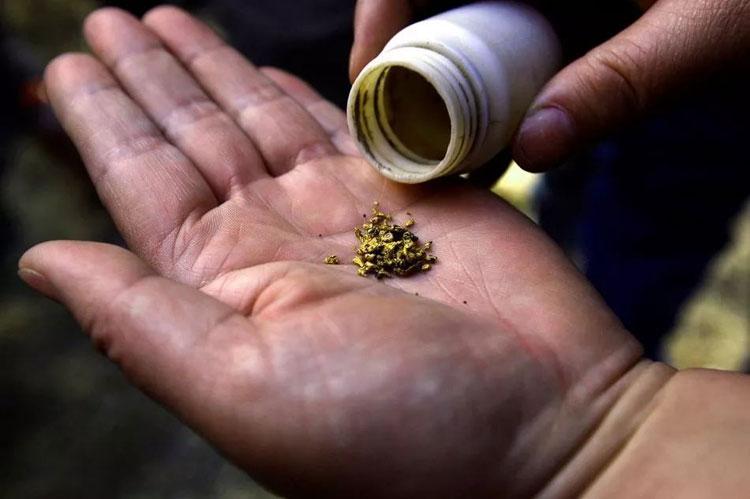
Nuggets
Pieces larger than 15 g are called nuggets. The formation of nuggets occurs much less frequently, but their value is much higher. The larger the size of the piece, the more valuable the find will be.
In some sources you can find mention of a 2.5-ton nugget, which was extracted from the ground in the 11th century. The nugget has not survived to this day, and finding something similar is now almost impossible. The specimens found in recent history are much smaller, but some still deserve attention:
- The Australian continent is remembered as the location of the record holder among nuggets. The giant is known as the “Holtermann Plate”. The weight of the find was 100 kg.
- The second place is occupied by a giant dug up on the island of Hokkaido. The name of the nugget is “Japanese”, weight – 71 kilograms.
- The Ural nugget weighing 36 kg got its name “Big Triangle” due to its unusual shape.
- The Magadan “Golden Giant” closes the circle of famous nuggets. True, its weight is quite modest, only 14 kg.
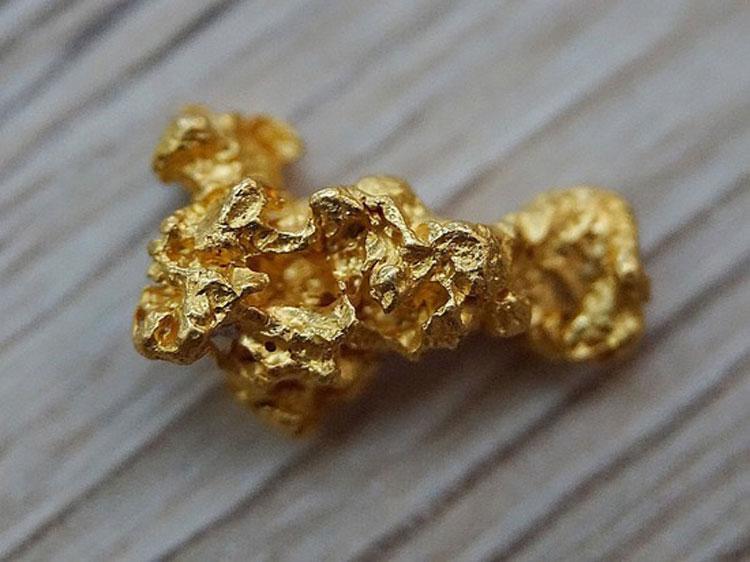
Nuggets are never pure gold. And impurities can change the color of the metal beyond recognition. Therefore, it is very difficult to detect a nugget, and only an experienced specialist can determine whether it belongs to a noble metal.
What is the difference between gold nuggets and gold nuggets?
From the point of view of the average person, both types of ore can be called gold. But for a gold miner the difference is quite noticeable:
- The grains contain up to 97% pure gold; nuggets are replete with impurities that are difficult to remove.
- Mining grains is more economically profitable.
- Nuggets are extremely rare.
Gold miners make money mainly from grains. Finding a good nugget is considered a great success and promises not so much income as prestige, creating a name for the miner.
How did gold get into our planet?
There are two popular theories among scientists that are not equally likely. The first theory implies that at the moment when the planet was just beginning to form, a certain cosmic body fell into it, which eventually melted in the core during its formation, and from the core during volcanic eruptions and earthquakes fell into the crust.
This is a less probable theory, since it does not explain the presence of gold-bearing sand, the existence of gold on other planets, asteroids, in water, and so on, moreover, testing such a theory, as well as providing evidence for it, is simply impossible at the moment.
The second theory, much more likely, implies that gold was already in the matter from which the planet formed. This perfectly explains why the precious metal is relatively evenly distributed over its surface, why nuggets and gold-bearing sand are found, as well as many other points that destroy the first theory.
But in general, the origin of gold is still a subject of debate among astrophysicists, physicists, chemists and geologists.
In any case, it is formed precisely in the bowels of the planet, under conditions of titanic pressure and enormous temperatures. Sometimes from there it comes out with earthquakes and other catastrophic results of movement within the Earth. Why does it lie inside?
You may be interested in: 9 important tips on how to hand over gold to a pawnshop without returning it
Due to the weight of gold, during the formation of a cosmic body, its heavy atoms were attracted much more strongly to the center of the sphere than any aluminum, as a result of which an interesting statistical trend is observed: the deeper the mine goes, the greater the probability of finding gold, but at the same time, the more higher mineralization of the found nuggets.
Types of deposits
There are only two types of gold deposits in nature: primary and secondary. The former are also called indigenous, the latter – alluvial.
Conventionally, one can also distinguish this type of deposit as alloys. Here the ore contains not only gold, but also silver, copper, nickel or platinum. The actual gold content in such deposits will be reduced, but they are often discovered during the development of other materials.
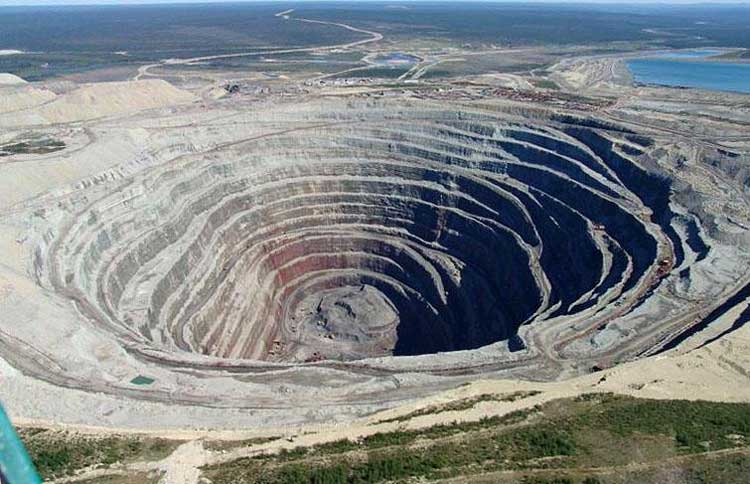
Indigenous
Primary deposits of gold are found in rock, in places of ancient volcanic activity. The metal in such deposits originates as a result of the solidification of lava that comes to the surface. The reaction with cold air gives rise to quartz and freed grains of gold in the lava.
The primary deposits are rich in gold dust, which can only be found using special equipment. The extent to which the rock will be saturated with grains of noble metal depends on the predominance of certain elements in the chemical composition and the intensity of quartz formation. There are deposits from 100 to several thousand tons.
Alluvial
This type of deposit is the most convenient for development. The ore lies as close to the surface as possible. The placer can be concentrated along river beds or hidden in the voids between layers. A secondary deposit is obtained under the influence of physicochemical factors:
- washing out of primary deposits by groundwater;
- temperature changes;
- influence of microorganisms and so on.
The occurrence of gold in secondary mining areas will vary in quantity and quality. Unlike primary ones, they are smaller, from 5 to 50 tons. In addition, such quarries are subject to repeated washouts. Often new deposits are discovered after tectonic movements, landslides or soil subsidence.
What is the difference between nuggets and nuggets, and what are nuggets?
Even raw gold from alluvial deposits almost never needs to be exposed to chemicals or technical means designed to separate the gold from the ore, making it much more accessible.
Because of this, the efforts made by gold miners to find deposits of grains are much greater than to find deposits of nuggets, which first need to be dug up for a very long time, and then get rid of the accompanying elements.
That is, the grains are almost always more or less pure gold, the proportion of which in some deposits reaches 97%. Gold dust can simply be taken and sifted through a special sieve, and gold will remain on it.
You may be interested in: Properties of gold: physical and chemical properties
This was the reason for numerous gold rushes that at one time struck North America, Russia, and Australia.
But at the same time, relatively pure gold nuggets do come across in nature, and the discovery of large specimens is considered a huge success not only because of their high cost, but also because of their appearance and rarity: they are beautiful, miraculous works of art, known only to nature, a meeting with which can be considered historical. Each of them has its own unique name, and their number does not exceed several dozen.
Here is a list of champions by size and weight of gold content:
- Australian nugget from 1869 weighing 70.9 kg with a gold content of 69.6 kg
- The “Holtermann Plate” is a huge block weighing 235.14 kg with 82.11 kg of pure gold, found in 1871
- “Welcome Stranger” - 71.1 kg, about 30 kg of pure gold
- “Hand of Fate” - 27 kg of almost pure gold.
The weight and percentage of gold in most of history's other giant nuggets is unknown because many of them were melted down into ingots, a process that is disastrous for such works of art.
At the same time, it is noted that out of the 10 largest nuggets, 6 had quartz inclusions. Where such giants come from is a mystery.
How are deposits developed?
Gold mining is a long and labor-intensive process. Today, like hundreds of years ago, gold is sought through numerous trials and errors. This requires not only professional knowledge of geology and the ability to conduct terrain reconnaissance. Observation, experience and even an intuitive approach help in the search.
In this case, it is necessary not only to find a deposit, but also to conduct chemical analyzes, take samples, run test drilling... All this allows us to draw a conclusion about the percentage of gold content in the rock and the profitability of quarry development.
Preparatory measures include the following:
- visual exploration of the area;
- determining the boundaries of a gold deposit;
- preparatory work in engineering;
- rock testing for gold content;
- calculation of economic profitability;
- establishing ownership of the deposit lands;
- construction of a production station equipped with specialized equipment.
Careful study of the terrain is a very important component. After all, the gold mining industry is one of the most expensive. The enterprise employs thousands of employees, and the construction of the station and the purchase of equipment costs more than one billion dollars. Mistakes in choosing a location are simply unacceptable.
